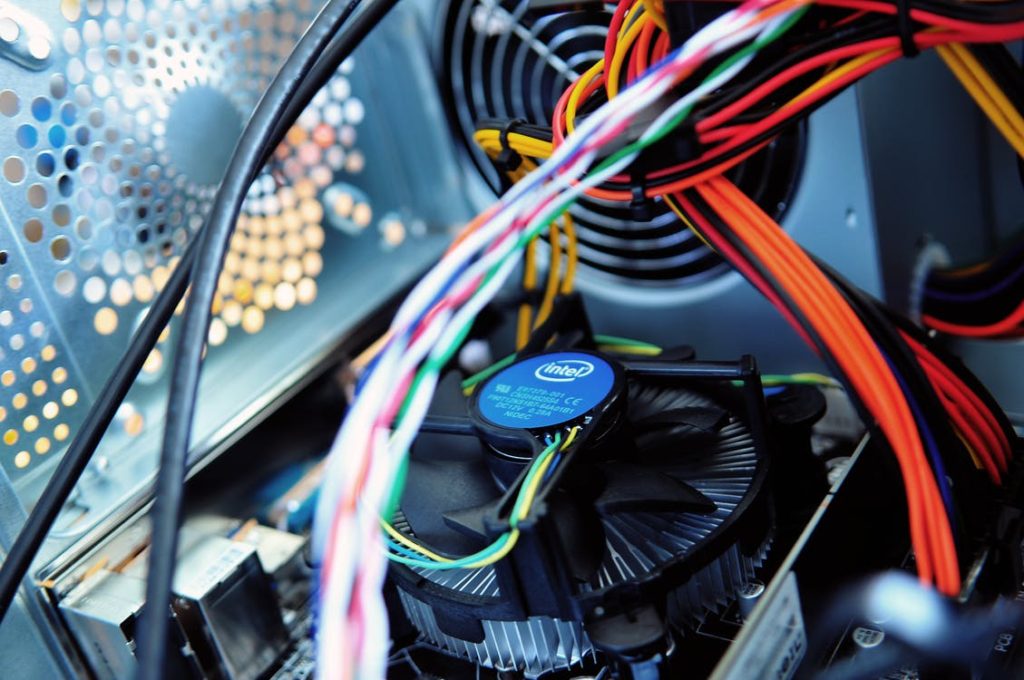Thermal Management in Embedded Systems
First of all, thermal management is the use of different temperatures monitoring devices and cooling systems. Such as air flow within a processor. In additions, the air flow controls the whole temperature of internal cabinet temperatures. If there is more air being forced into a system as the pressure inside the unit is higher than outside, then it is a "positive airflow". A balanced airflow is the most efficient positive airflow for reducing over heat.
Thermal Management
Nowadays, most of the electronic devices produce extra heat. Many industrial embedded devices performs multiple tasks at once and are resource-constrained devices. In other words, in embedded computer it is easily to create hot spot. Therefore, devices need thermal management to advance reliability and avoid premature failure. Furthermore, thermal managements is essential and important for devices to greater the performance. If one is looking for a high temperature resistant industrial computer can definitely look at Acnodes' PC monitor or panel mount computers designed to use at a difficult condidtions and environments.

Measurement of temperature
For measurement of temperature, the units are °C/W. For example, a heat sink rated at 10 °C/W will get 10 °C hotter than the surrounding when it spends one Watt of heat. More additions, a heat sink is a substance for absorbing excessive heat. Therefore, a heat sink with a low °C/W value is more efficient than a heat sink with a high °C/W value.
If there are no other energy interactions then the amount of heat output is the same to the power input. When a computer is in operation then it generates the heat. As a result, higher temperature range makes the CPU run at almost 40°C beyond ambient. Other critical components including the core chip-set calculates to run at almost 50°C beyond ambient. This basic analysis indicated that the design would not meet the customer’s requirements.
Thermal test data concludes the CPU to run at approximately 72°C at 25°C ambient. According to the updated thermal model, the unit should have measured 53.6°C in a 25°C ambient.
Here are three configuration examples that will meet a customer's requirement. First example, no blower, natural convection/conduction chassis with fins & HDD (Hard Disk Drive) mounted externally. The HDD temp (above ambient) is around 7-9°C. Then the CPU Temp (above ambient) is possible reducible from 43°C to 33°C. Second example, blower, sheet metal chassis with louvers and HDD mounted internally. The HDD temp is around 15°C and CPU temp is around 25°C. Third example, blower, sheet metal chassis with louvers with the HDD mounted externally and conducted to the phone unit. The HDD temp is around 10°C while the CPU temp is around 25°C.
Avoid Thermal Problem
As heat is generating every time an active device is in action. As a matter of fact, heat itself does not become an issue. On the other hand, an increasing temperature above a critical point will be an issue. Moreover, in many cases the heat will be around 105 to 120°F.
By understanding the thermal design can help a system designer choose a better fit to the marketplace. In fact, most of the make or buy choice involves thermal awareness, overall system cost, and standard versus custom design. For instance, in special environments, a custom solution may be required for effectiveness. This is the reason why designers using simulation tools and thermal measurements to test on hardware.
About Acnodes Corporation
Acnodes Corporation makes, sells, and designs industrial computers and display solutions for diverse industries that range from automation to military. Most of all, they supply efficient and valuable products for their customers. Additionally, they have technological innovations in the form of Panel PCs, embedded computers, rack mount servers, and rugged monitors. Acnodes Corporation strives to meet their clients’ needs with cutting-edge technology and solutions.





